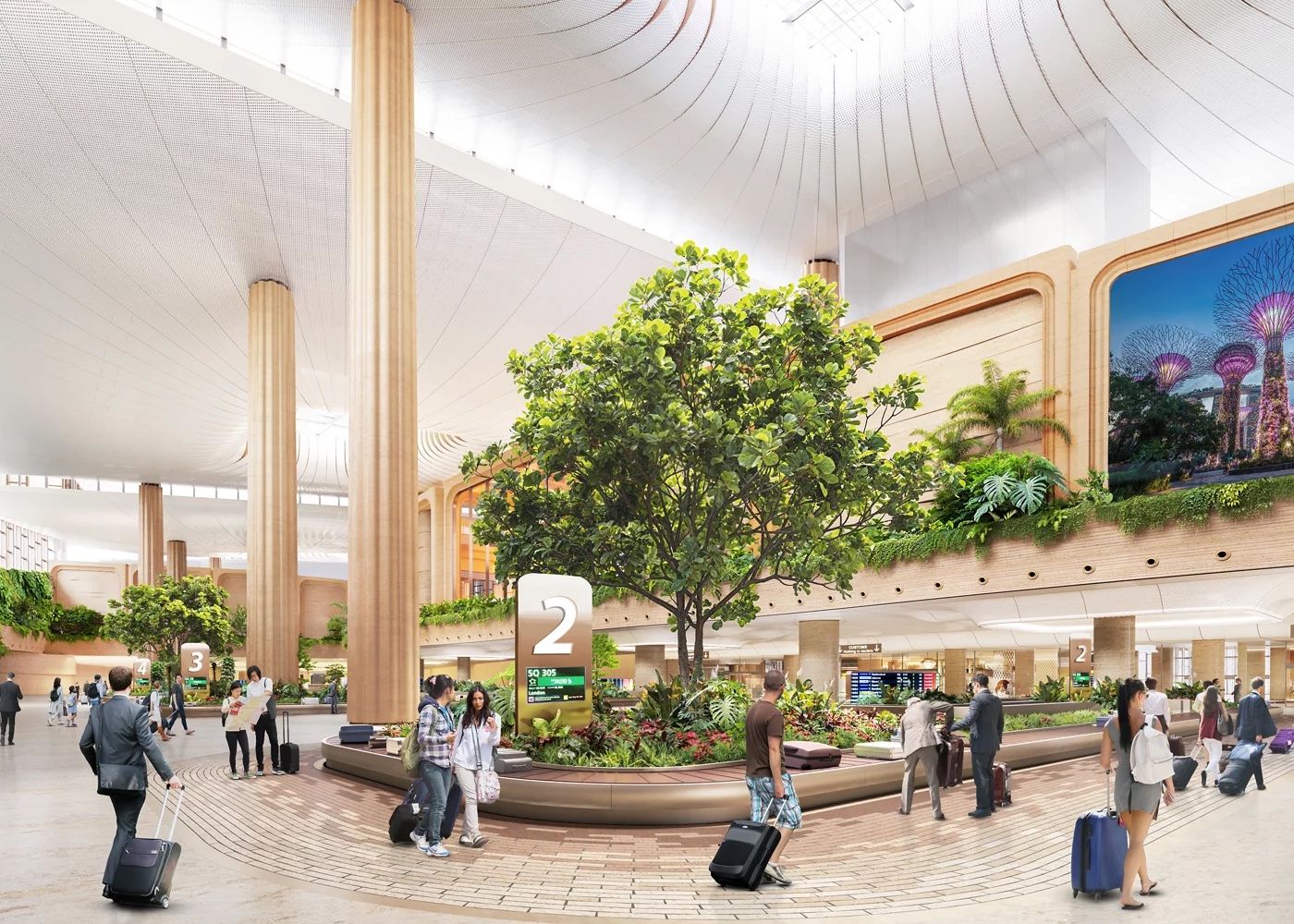


It's official as Changi Airport Group has started the construction on Terminal 5 (T5), which is its most ambitious expansion to date and setting a new benchmark for sustainable, future-ready air travel.
As per the announcement, the groundbreaking ceremony, officiated by Prime Minister Lawrence Wong on May 14 at the Changi East site, signals the start of a decade-long project that will reshape Singapore’s aviation landscape.
The Terminal 5 (T5) will host the operations of Singapore Airlines (SIA) Group, with the terminal’s first phase designed to handle about 50 million passengers annually.
In a statement on Wednesday, Singapore Airlines Group said it will consolidate SIA and Scoot operations under one roof at the new terminal when it opens, “providing space for our future growth and enhancing operational synergies”.
The group will move out of Terminals 1, 2 and 3 when it relocates to Terminal 5. Worth mentioning here, in terms of land area, Terminal 5 will be as big as all of the current terminals combined, said Prime Minister Lawrence Wong at the groundbreaking ceremony on Wednesday.
The new terminal will be built in two phases, with the first phase scheduled for completion in the mid-2030s. T5’s design will draw inspiration from the nation’s lush landscapes and urban sophistication, with natural light filtering through public spaces and vertical gardens in the baggage hall.
The upcoming terminal will also be a Green Mark Platinum Super Low Energy Building and powered by clean energy. Once operations are started, video analytics and AI will be used to actively track aircraft turnaround activities and predict potential delays in flight departures. With full visibility of the situation, ground handlers can better deploy resources to mitigate potential delays.

In the meantime, SIA Group will "continue to invest in its existing operations" at the three terminals, the company said.
“We are committed to working closely with Changi Airport Group to ensure that Terminal 5 provides a world-class ground experience for customers when they arrive, depart, or transit through our home base,” it added.
First announced in the year 2013, the T5 project was sidelined for two years during the Covid-19 pandemic. Its design was subsequently revised to address post-pandemic travel needs, including sub-terminals and contactless touchpoint systems.
One of the key milestones upon T5 opening is the consolidation of Singapore Airlines (SIA) and its budget arm Scoot under one roof for the first time. Currently, the airline operates across three terminals.
By bringing together their operations, the SIA Group aims to streamline processes and enhance operational synergies. This includes check-in and baggage handling to aircraft turnaround and passenger transfers.
The project is part of the broader Changi East development, which spans 1,080 hectares and includes a new urban district and industrial zone, further reinforcing Singapore’s status as a global air hub.
However, at the groundbreaking ceremony on Wednesday, Prime Minister Lawrence Wong warned that Singapore cannot presume that Changi’s success will continue “on its own”.
Though there have been recent positive steps between the US and China, uncertainties remain, and a global slowdown cannot be ruled out, he noted. Meanwhile, competition is sharpening as other countries invest in modernising their airports and their adjacent infrastructure.
Singapore must stay connected to the world and ensure that its air hub remains competitive, he said.
“That’s why today, we are making another bold move in Changi, with this groundbreaking for Terminal 5.”
Both the phases of the new terminal are expected to take around a decade to complete, and will boost Changi’s total annual capacity to around 140 million passengers, up from 90 million now.
As per the Changi Airport Group, drawing on lessons learnt from the Covid-19 pandemic, T5 will be designed with the flexibility to operate as smaller sub-terminals when needed, with space that could be converted for the handling of contingencies, such as health testing operations or the segregation of high-risk passengers.
Post-Covid, passenger traffic at Changi Airport has strongly recovered and reached new highs. Changi Airport handled an annual record 68.4 million passenger movements for the year ended 31 March 2025, and now links Singapore directly to about 170 cities globally, with close to 100 airlines operating more than 7,200 flights weekly. About two million tonnes of airfreight throughput was recorded for 2024.
